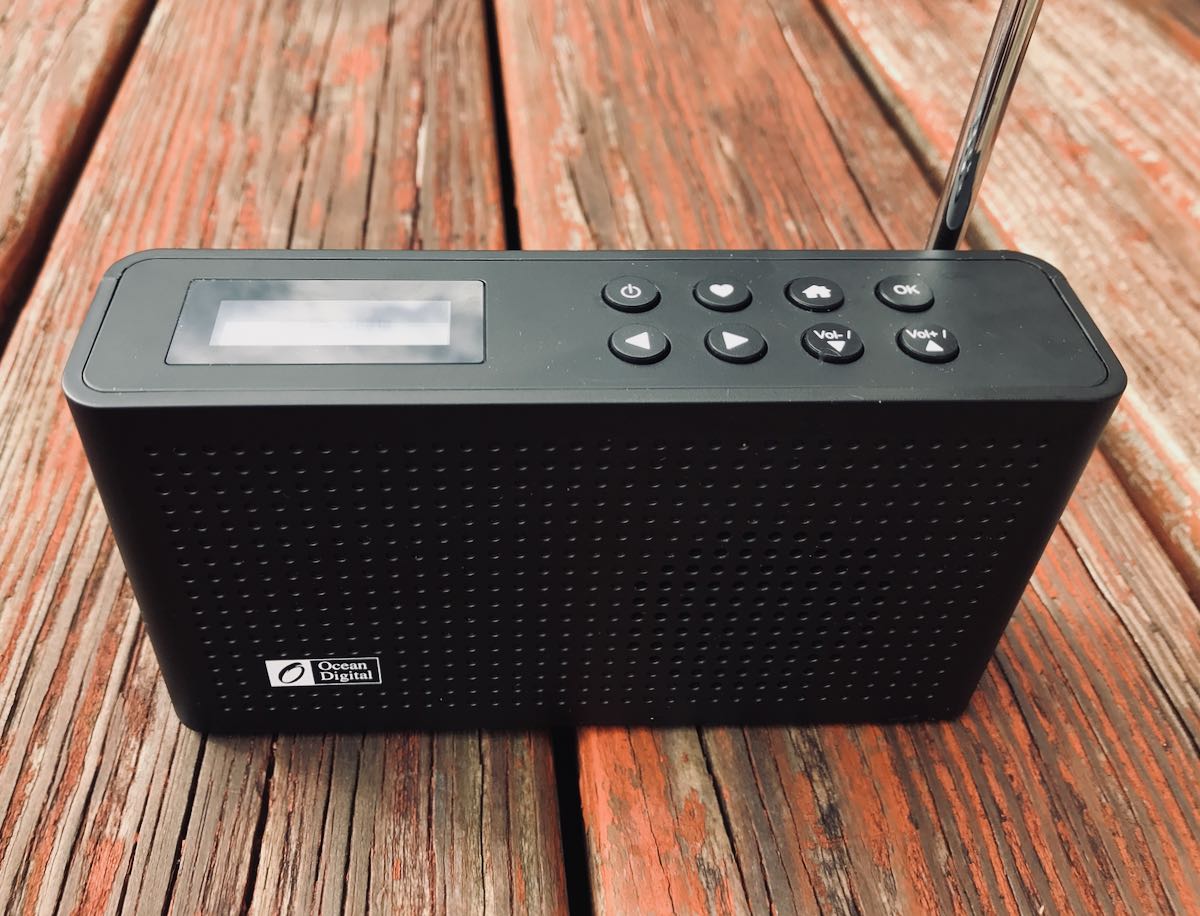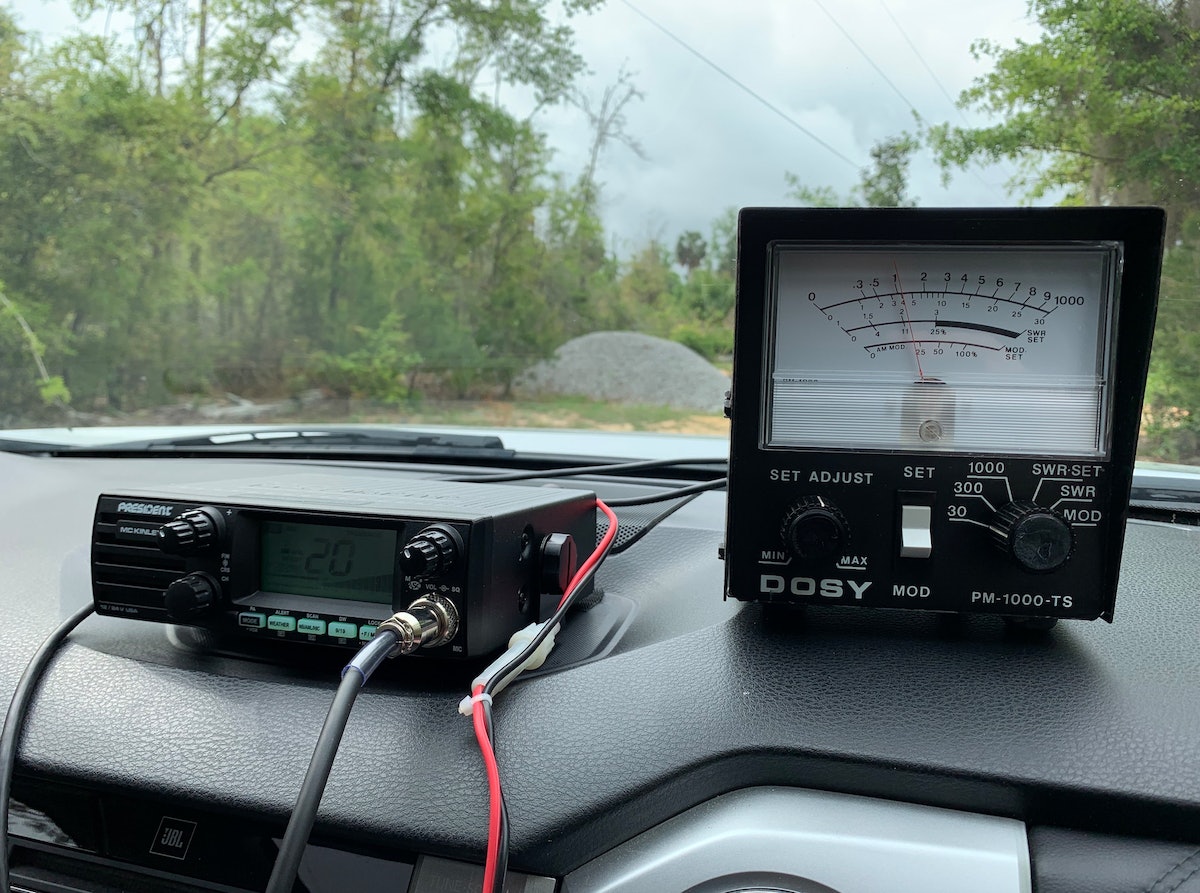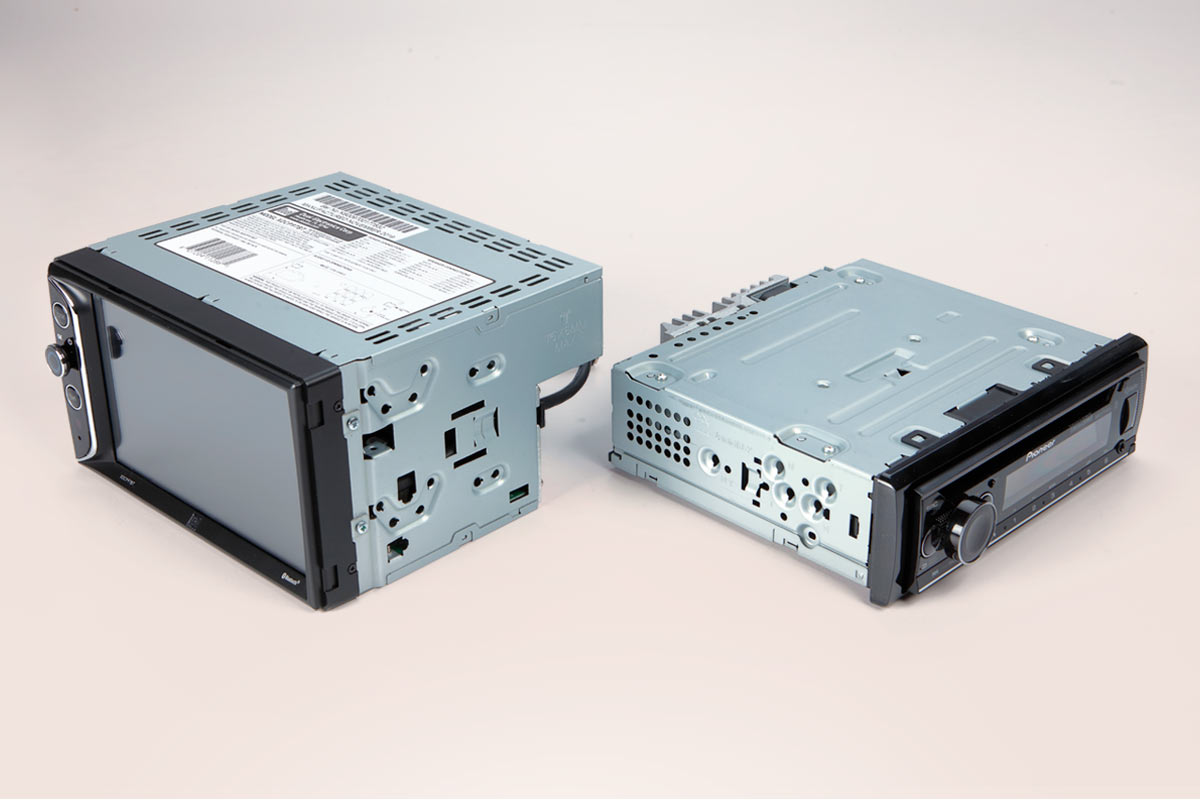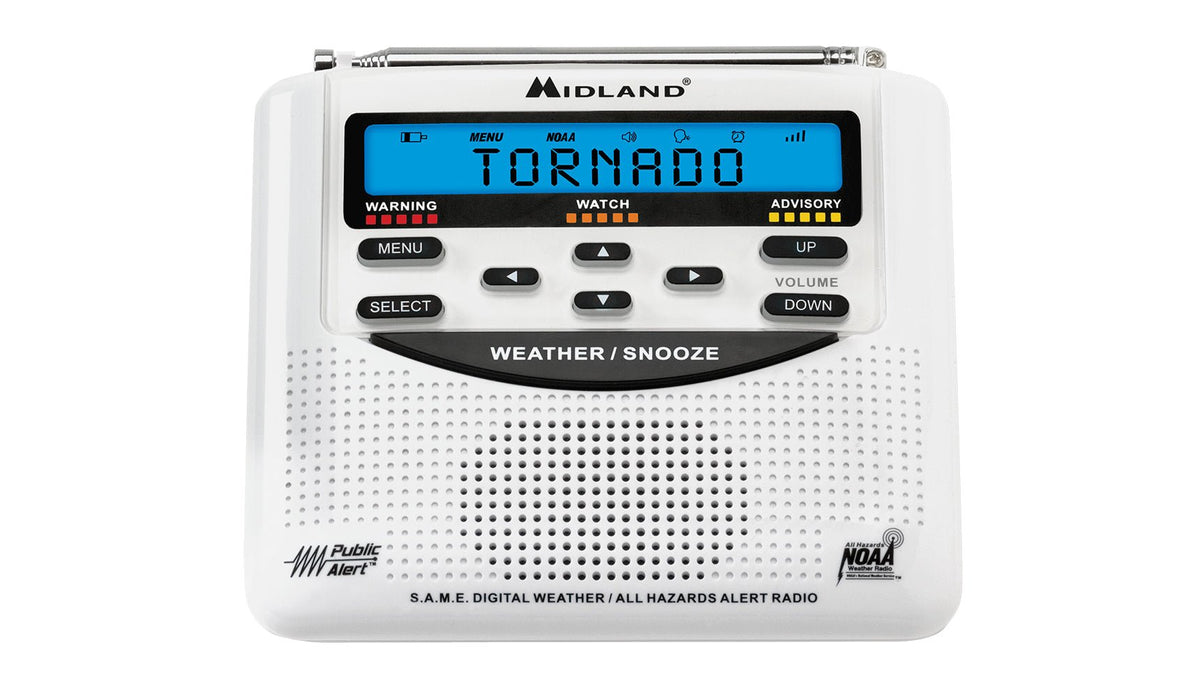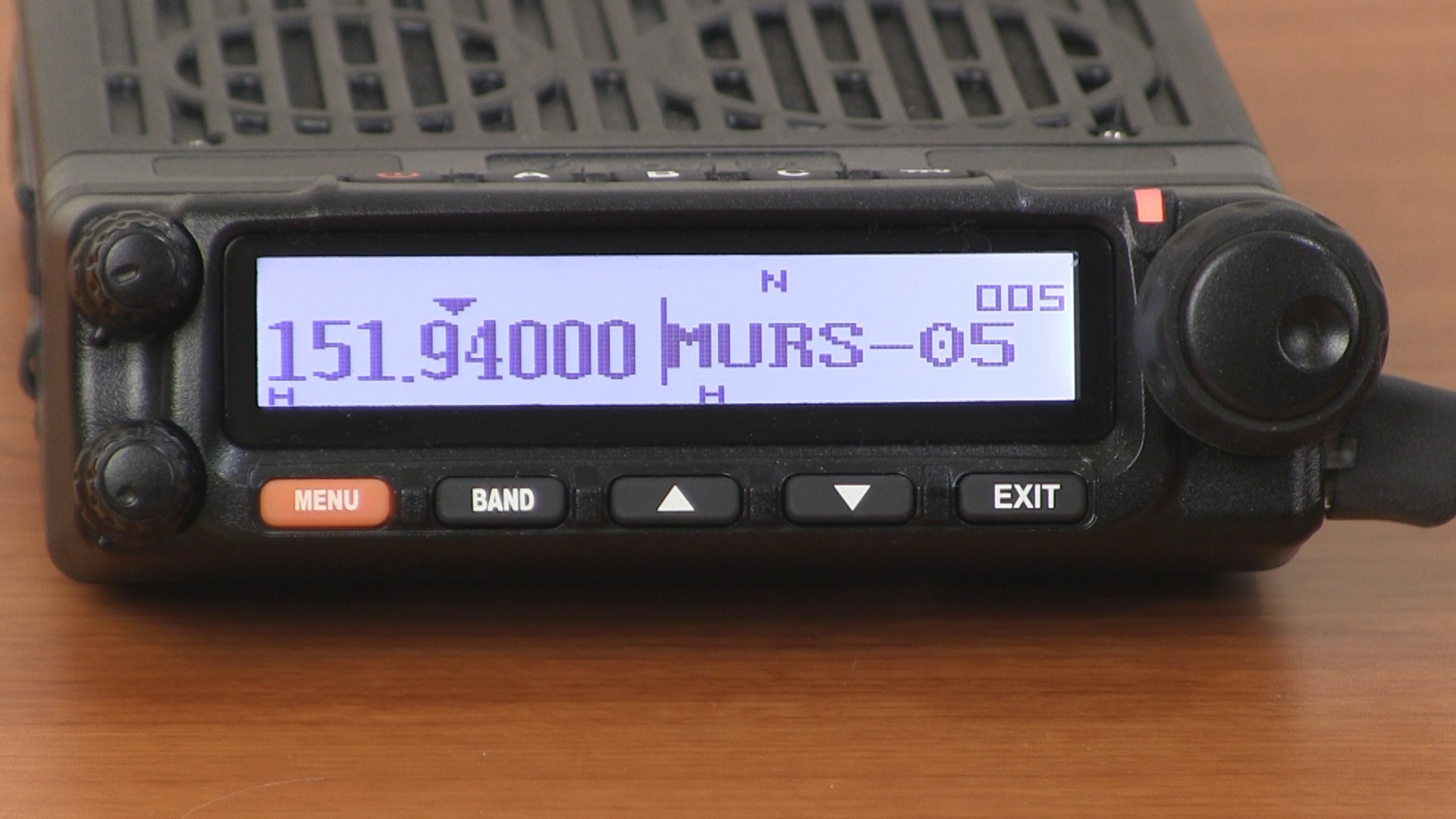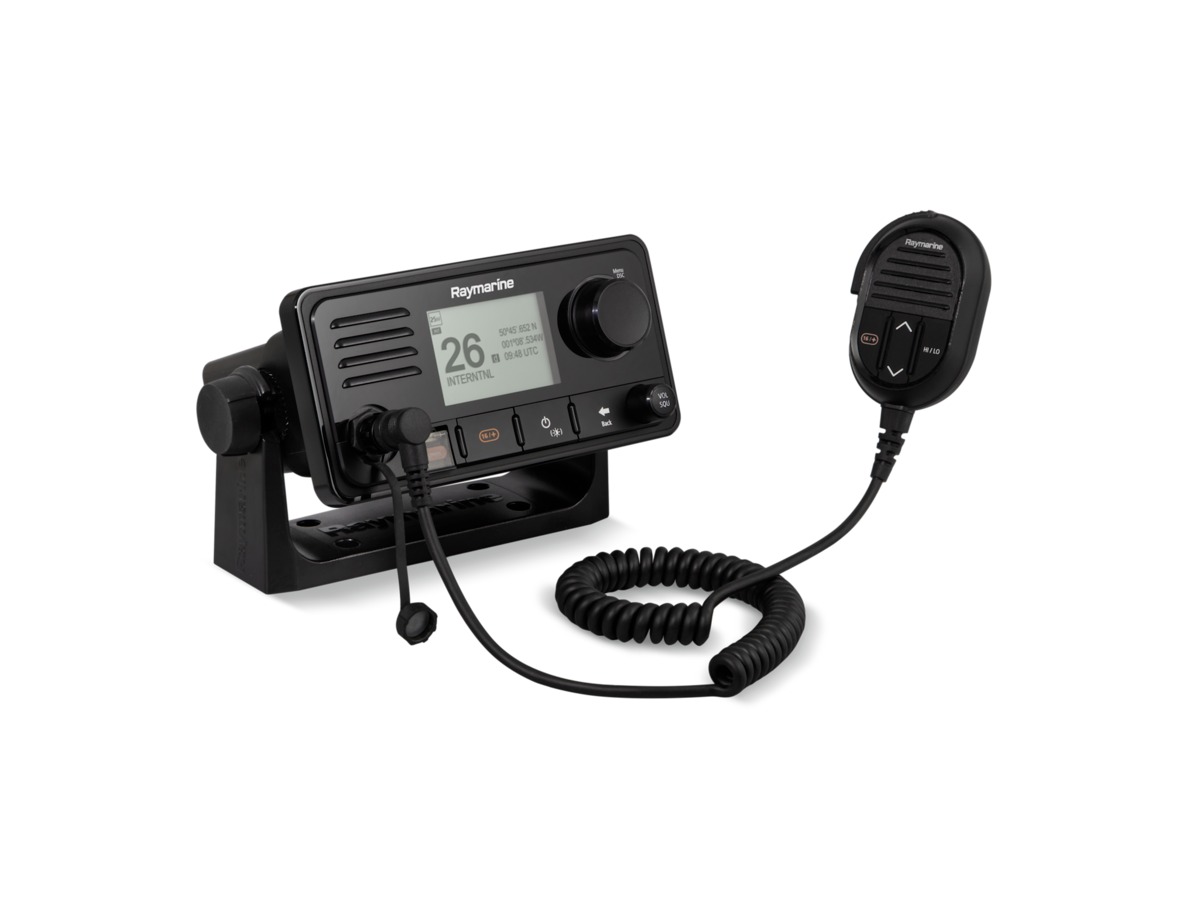Home>Devices & Equipment>Radio>What Is A UHF Radio
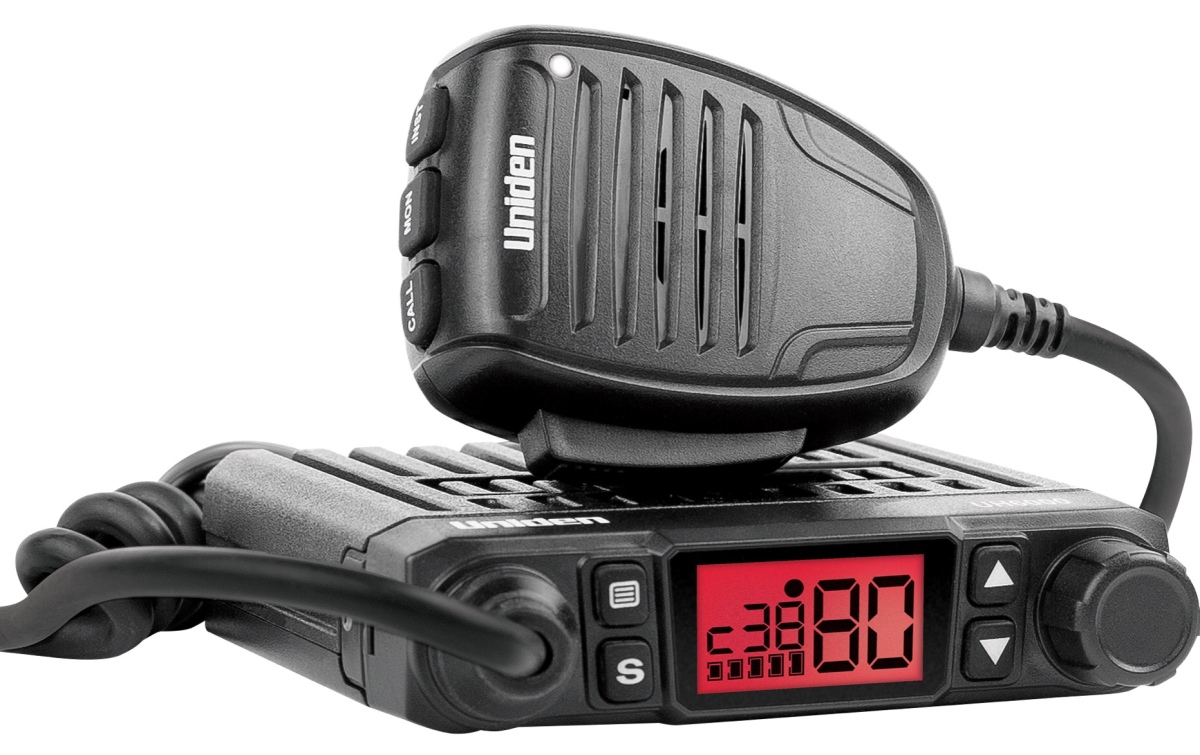

Radio
What Is A UHF Radio
Published: November 17, 2023
Learn all about UHF radios and how they work. Find out the key features and benefits of radio communication in various industries.
(Many of the links in this article redirect to a specific reviewed product. Your purchase of these products through affiliate links helps to generate commission for AudioLover.com, at no extra cost. Learn more)
Table of Contents
Introduction
Welcome to the world of UHF radio! In this digital age, where communication plays a vital role in every aspect of our lives, it is important to stay connected and informed. Whether you are an outdoor enthusiast, a professional in the field, or simply looking for a reliable mode of communication in emergencies, UHF radio can prove to be a valuable tool.
UHF stands for Ultra High Frequency, which refers to the range of electromagnetic wavelengths used by these radios. They operate within the frequency range of 300 MHz to 3 GHz, making them an excellent choice for short-range communication in various industries and applications.
What sets UHF radios apart from other communication devices is their ability to provide clear, reliable, and secure communication even in challenging environments. From construction sites and warehouses to event management and outdoor adventures, UHF radios have proven to be a trusted method of communication.
With the advancements in technology, UHF radios have evolved to offer a wide range of features and functionalities. From voice communication to data transmission, these radios have become more versatile and efficient than ever before.
In this article, we will explore the world of UHF radios in detail. We will dive into their definition, how they work, the advantages they offer, their common applications, a comparison with VHF radios, and tips for choosing the right UHF radio for your needs. So, let’s embark on this journey to discover the fascinating world of UHF radio!
Definition of UHF Radio
UHF radio, also known as Ultra High Frequency radio, is a type of wireless communication technology that operates within the frequency range of 300 MHz to 3 GHz. This range falls within the radio wave spectrum and is higher in frequency than Very High Frequency (VHF) radios.
UHF radios utilize electromagnetic waves to transmit and receive voice, data, and other forms of communication. They are commonly used for short-range communication due to their ability to penetrate obstacles such as buildings, walls, and foliage.
One of the key characteristics of UHF radios is their relatively shorter wavelength. The shorter wavelength allows for the construction of smaller and more portable devices, making UHF radios popular in various industries and applications.
UHF radios operate on multiple channels, which are different frequencies within the UHF spectrum. These channels allow for simultaneous communication between multiple users without interference, enhancing the efficiency and effectiveness of communication.
In addition to voice communication, UHF radios can also transmit and receive data. This feature enables the use of UHF radios in applications such as telemetry, remote sensing, and control systems.
Furthermore, UHF radios can operate in both analog and digital modes. Analog UHF radios modulate sound waves into electrical signals for transmission, while digital UHF radios convert the sound waves into digital signals for more efficient and noise-resistant communication.
Overall, UHF radios are versatile devices that offer reliable and clear communication in a variety of environments. Their compact size, multiple channels, and ability to transmit both voice and data make them essential tools in industries such as construction, manufacturing, security, event management, and outdoor activities.
How UHF Radio Works
Understanding how UHF radio works is essential to grasp the mechanics behind its reliable communication capabilities. At its core, UHF radio operates by utilizing electromagnetic waves to transmit and receive signals.
When you speak into a UHF radio, your voice is converted into an electrical signal by a microphone. This electrical signal is then modulated onto a specific UHF frequency within the operating range of the radio.
The modulated signal is then transmitted through the radio’s antenna in the form of electromagnetic waves. These waves travel through the air at the speed of light, carrying the information encoded in the electrical signal.
Once the waves reach the intended recipient or receiver, the antenna on the receiver picks up the electromagnetic waves. The waves are then converted back into an electrical signal, which is demodulated to separate the voice or data from the received signal.
The demodulated signal is then amplified and converted into sound or data, allowing you to hear the voice or access the transmitted information.
It’s important to note that UHF radios operate on specific frequencies, usually designated by government regulatory bodies. These frequencies are divided into channels, which allow multiple radios to communicate without interference.
In addition to the basic functionality of transmitting and receiving signals, UHF radios may also include additional features. Some radios have built-in encryption capabilities to secure communication, while others may have GPS functionality for location tracking.
UHF radios can operate in various modes, including simplex, duplex, and trunking. In the simplex mode, one radio transmits while others listen, allowing for one-way communication. In duplex mode, radios can transmit and receive simultaneously, enabling two-way communication.
Trunking mode is a more advanced mode that allows a group of radios to share a limited number of frequencies by efficiently managing the channels. This mode is often used in larger organizations or public safety agencies, where multiple users need to communicate simultaneously.
Overall, the workings of a UHF radio are relatively straightforward. By utilizing electromagnetic waves and various modulation techniques, UHF radios enable secure and efficient communication across short distances. Understanding these principles helps in selecting the right UHF radio and maximizing its effectiveness in different scenarios.
Advantages of UHF Radio
UHF radios offer numerous advantages that make them a preferred choice in various industries and applications. Let’s explore some of the key benefits of using UHF radios:
- Short-range communication: UHF radios are ideal for short-range communication due to their ability to operate in dense environments and penetrate obstructions such as walls and buildings. This makes them well-suited for use in urban areas, construction sites, and indoor environments.
- Compact and portable: UHF radios are compact in size and lightweight, making them easy to carry and use on the go. Their portability allows for increased mobility and flexibility in various professional settings, outdoor activities, and emergencies.
- Multiple channels: UHF radios operate on multiple channels within the UHF frequency range, which allows for simultaneous communication between multiple users without interference. This enables efficient communication and prevents overcrowding on a single channel.
- Clear and reliable communication: UHF radios provide clear and reliable communication, thanks to their higher frequency range. The shorter wavelength used in UHF radios allows for better signal propagation, resulting in minimal noise and interference, even in challenging environments.
- Enhanced privacy and security: Many UHF radios offer encryption capabilities, ensuring that communication remains private and secure. This feature is particularly valuable in applications where sensitive or classified information needs to be transmitted.
- Wide range of applications: UHF radios find applications across various industries and activities. They are widely used in construction sites, manufacturing facilities, event management, security teams, adventure sports, and public safety agencies. The versatility of UHF radios makes them reliable tools in different scenarios.
- Versatile features: UHF radios come with a range of features and functionalities, such as VOX (Voice-Activated Transmission) for hands-free communication, built-in weather channels for real-time updates, and GPS capabilities for location tracking. These features add convenience and enhance the usefulness of UHF radios in different situations.
Overall, UHF radios provide a reliable and efficient mode of communication with several advantages. Their ability to operate in challenging environments, portability, privacy features, and versatile applications make them an excellent choice for individuals and professionals who rely on effective communication in their day-to-day activities.
Applications of UHF Radio
UHF radios have a wide range of applications across various industries and activities. Their reliable and short-range communication capabilities make them invaluable in different scenarios. Let’s explore some of the common applications of UHF radios:
- Construction sites: UHF radios are frequently used in construction sites to facilitate communication among different teams and individuals. From site supervisors and project managers to crane operators and laborers, UHF radios ensure smooth coordination, increased safety, and efficient workflow.
- Manufacturing facilities: In manufacturing plants or warehouses, UHF radios play a crucial role in maintaining clear communication between different departments, such as production, quality control, and logistics. These radios improve efficiency, minimize delays, and enhance overall productivity.
- Event management: UHF radios are essential tools for event organizers and coordinators. They enable seamless communication between different teams involved in event setup, security, and operations. UHF radios ensure effective coordination, quick response times, and enhanced safety during events.
- Security teams: Security personnel rely on UHF radios for effective communication and coordination, particularly in large venues, public spaces, or private establishments. UHF radios enable security teams to quickly respond to incidents, update each other on suspicious activities, and ensure a safe and secure environment.
- Adventure sports: Outdoor enthusiasts and adventure sports enthusiasts often use UHF radios to stay connected and ensure safety during activities such as hiking, camping, skiing, and mountain biking. UHF radios allow for reliable communication even in remote areas where cellphone reception is limited.
- Public safety agencies: UHF radios are extensively used by police departments, fire departments, and emergency medical services to communicate during critical situations. UHF radios provide reliable and secure communication channels for quick response times and effective coordination in emergencies.
- Hospitality industry: Hotels, restaurants, and resorts utilize UHF radios to streamline communication between staff members, such as front desk personnel, housekeeping, and security teams. UHF radios enable prompt service delivery, enhanced guest experience, and efficient management of operations.
- Transportation and logistics: UHF radios are utilized in transportation and logistics operations, including trucking companies, delivery services, and logistics centers. These radios facilitate real-time communication between drivers, dispatchers, and warehouse personnel, ensuring smooth logistics operations and timely deliveries.
These are just a few examples of the diverse applications of UHF radios. Their versatility, reliability, and short-range capabilities make them a valuable communication tool in numerous industries and settings. Whether it’s for enhancing teamwork, improving safety, or ensuring efficient operations, UHF radios have proven to be indispensable in various professional and recreational environments.
Comparison between UHF and VHF Radio
When it comes to choosing the right radio for your communication needs, understanding the differences between UHF (Ultra High Frequency) and VHF (Very High Frequency) radios is essential. While both types of radios offer reliable communication, they have distinct characteristics that make them suitable for specific applications. Let’s compare UHF and VHF radios:
- Frequency Range: The primary difference between UHF and VHF radios lies in their frequency range. UHF radios operate within the frequency range of 300 MHz to 3 GHz, while VHF radios operate within the range of 30 MHz to 300 MHz. UHF radios have shorter wavelengths, allowing them to penetrate obstacles and provide better coverage in urban and indoor environments.
- Signal Propagation: One advantage of VHF radios is their ability to naturally propagate signals over longer distances. VHF waves travel farther in open spaces, making them suitable for communication between two points that are far apart. However, VHF signals are more susceptible to interference from buildings, trees, and other physical obstructions.
- Obstruction Penetration: UHF radios excel at penetrating obstacles such as buildings, walls, and foliage. This makes them a preferred choice in urban areas and indoor environments where signals need to bypass physical barriers. VHF radios, on the other hand, are more likely to experience signal degradation when faced with obstructions.
- Noise and Interference: UHF radios generally experience less noise and interference compared to VHF radios. This is because UHF waves have a higher frequency, allowing them to avoid atmospheric noise and electrical interference that can affect VHF signals.
- Applications: UHF radios are commonly used in industries and applications where short-range communication is crucial, such as construction sites, manufacturing facilities, event management, and security teams. VHF radios are often preferred in scenarios that require long-range communication, like search and rescue operations, maritime communication, and rural areas with wide expanses.
- Radio Size and Portability: UHF radios typically have smaller form factors compared to VHF radios. This makes UHF radios more portable and convenient for users who need to carry them throughout the day.
- Regulatory Considerations: Different countries and regulatory bodies may have specific rules and frequencies allocated for UHF and VHF radios. It is essential to check and comply with local regulations before operating these radio devices.
Ultimately, the choice between UHF and VHF radios depends on the specific communication requirements of your application. Consider factors such as terrain, distance, obstructions, and the environment in which the radios will be used.
By comparing the characteristics and understanding the strengths of UHF and VHF radios, you can make an informed decision and select the most suitable radio for your needs.
Choosing the Right UHF Radio
When it comes to choosing the right UHF radio for your communication needs, there are several factors to consider. Finding the perfect radio involves evaluating key features and functionalities that align with your specific requirements. Here are some factors to consider when selecting a UHF radio:
- Frequency Range: Ensure that the UHF radio you choose operates within the frequency range that is allowed in your region. Different countries may have specific frequency allocations, so it’s essential to comply with local regulations.
- Power Output: Consider the power output of the radio. Higher power output generally allows for better signal coverage and communication range. However, be mindful of any legal restrictions on power output in your area.
- Channels and Privacy: Look for a UHF radio that offers multiple channels to prevent interference and overcrowding. Additionally, consider radios with privacy features like encryption capabilities to ensure secure communication when needed.
- Battery Life: Assess the battery life of the UHF radio, especially if you anticipate long periods of usage without easy access to charging. Look for radios with long-lasting batteries or the option to use high-capacity batteries for extended operation.
- Durability and Weatherproofing: If you plan to use the UHF radio in challenging environments, such as construction sites or outdoor adventures, opt for a radio that is rugged and weatherproof. Look for an IP rating that ensures resistance against water, dust, and impacts.
- Range and Terrain: Consider the range requirements for your communication needs. Evaluate the terrain in which the UHF radio will be used and choose a model that can provide sufficient coverage and penetration through any obstacles in that environment.
- Additional Features: Consider any additional features that may be important to your specific use case. This could include features like VOX (Voice-Activated Transmission) for hands-free operation, GPS functionality, and access to NOAA weather channels for real-time weather updates.
- Compatibility: If you already have existing radios or anticipate working alongside others who use UHF radios, ensure that the model you choose is compatible with the same frequency and channel settings.
- Reviews and Reputation: Before making a final decision, read reviews and consider the reputation of the UHF radio manufacturer or brand. Look for feedback on reliability, customer support, and overall user satisfaction.
By considering these factors and evaluating your specific requirements, you can choose the right UHF radio that will meet your communication needs effectively. Remember to also consider your budget and compare prices to find a balance between the features you need and the cost of the radio.
Conclusion
UHF radios play a crucial role in enabling reliable communication across various industries and activities. With their short-range capabilities, compact size, and ability to penetrate obstacles, UHF radios provide clear and efficient communication in challenging environments.
Throughout this article, we’ve explored the definition of UHF radio, how it works, the advantages it offers, common applications, a comparison with VHF radios, and factors to consider when choosing the right UHF radio.
UHF radios excel in applications such as construction sites, manufacturing facilities, event management, security teams, adventure sports, and public safety agencies. Their versatility, privacy features, and portability make them valuable tools in day-to-day operations and emergency situations.
When choosing a UHF radio, consider factors such as frequency range, power output, channels, durability, battery life, and additional features that best align with your specific communication needs.
Whether you’re a professional seeking efficient communication in your industry or an outdoor enthusiast looking for a reliable means of staying connected during adventures, UHF radios provide a dependable solution.
In conclusion, UHF radios offer a reliable and efficient mode of communication, allowing individuals and organizations to stay connected and enhance safety and efficiency in their respective domains. By understanding their capabilities and considering the right features, you can choose the perfect UHF radio to meet your communication requirements. Stay connected, stay informed, and enjoy the reliable communication provided by UHF radios!


